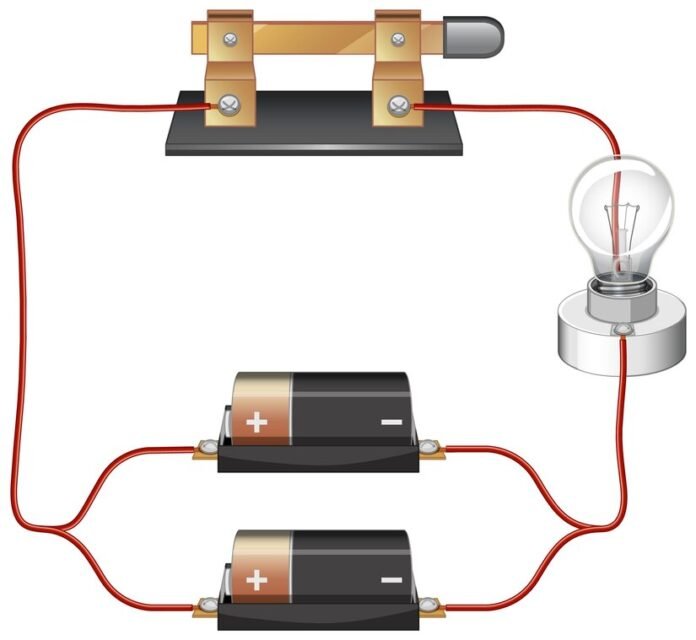Introduction
Electricity is one of the most important inventions of all time. It has changed how we live and work and continues to do so daily. But how much do you know about the units of electricity? This article will cover the unit of voltage and the importance of knowing your volts.
Voltage – Definition and Formula
Voltage is the difference in electric potential energy between two points. The unit of voltage is volt. The volt (abbreviated as ‘V’) is named after Alessandro Volta, an Italian physicist credited with creating the first electrical battery.
A volt is a scalar quantity, meaning it has only magnitude and no direction. It is a derived unit of voltage, defined as the electric potential difference across an electrical force of one newton per coulomb of charge.
Electric potential energy is the amount of work that can be done by a charged particle when it moves between two points in an electric field. The unit of electric potential energy is the joule (J).
In an electric field, a charged particle gains or loses energy as it moves between two points. The difference in electric potential energy between these two points is equal to the work done by the electric field on that particle as it moves from one point to another.
SI Unit of Voltage
A unit of voltage is the amount of energy that passes through a conductor when there is a difference in the potential of one volt between its ends.
The SI unit of voltage is the volt.
A single volt is the amount of energy needed to move one coulomb of charge through an electrical potential difference of one volt, or equivalently and more conveniently, 860 joules per coulomb (J/C). This definition links the unit of voltage, volt to the joule, the unit of energy in the SI system.
1 volt (V) = 1 joule per coulomb (J/C)
The voltage difference between two points in a circuit is measured with a voltmeter. The voltmeter has two wires attached, one usually red and the other black or silver. One end of each wire is connected to one side of the circuit, and the other is connected to the other side of the circuit. A voltmeter can measure voltage in a series circuit or parallel circuit.
Why is it Important to Know Volts?
It is important to know the voltage and amperage requirements of your device to ensure that it will work properly. For example, you might have this problem with a new device or appliance when it comes into your home. You plug it in, and nothing happens!
The problem could be that the voltage unit in your home is different from the one used by the new device or appliance. This would cause no current or power flow, which would mean no output or usable power can come from the item.
In some cases, such as when using multiple devices simultaneously, this could be dangerous because insufficient electricity will flow into each device. Instead, it will build up in one spot on the circuit board, which could ultimately cause a fire hazard.
Another possible reason for not being able to turn on the device is that you may need a certain type of adapter or converter to make it work. This can be especially true if you travel internationally and want to use your devices overseas. It is important to know the voltage and frequency of the country you are visiting, as well as the type of plugs they have. Using an adapter or converter that is not right for the device can damage it and cause it not to work at all.
Recommended Articles:
Unit of Wavelength – Definition, Types, Symbol and Units
Unit of Work – Definition, Types and Units
Units Of Measurements – Definition And Metric
Physics – Universal Law Of Gravitation
Physics – Uses Of Diode – Definition and Types
Voltage is a measure of the force that pushes electrons through a circuit. Electricity creates a difference in voltage between two points in an electric circuit. Electric current is the flow of electrons through a circuit, measured in amperes (amps). Voltage and current are two different aspects of electricity. However, they work together to ensure the lights stay on and the appliances operate properly. Power is the rate at which energy is transferred. It is measured in watts and calculated by multiplying voltage and current. P = VI If you supply a load, like a lightbulb or radio speaker, with 100 V at 1 A of current, the power is 100 W (100 V X 1A = 100W). Voltage is the difference in electrical potential between two points. It is a measure that indicates how much energy is transferred through a circuit or the flow of electrons when the circuit is closed. Voltage and wattage are related but different. Voltage measures the potential difference between two points in an electric circuit. It is usually measured in volts (V). You can think of voltage as the pressure behind electricity flow. The other measurement is wattage (W), which measures how much energy goes through something in one second. The more power we use at our home or workplace, the more likely we are to run up against "wattage limits" by our local utility providers. Unit of Voltage FAQs
What is the difference between current and voltage?
How is voltage related to power?
Is voltage equal to electrical potential?
What is the difference between a volt and a watt?
